US sends destroyers to track Russian nuclear sub and warship carrying hypersonic weapons after flotilla passed 25 miles off America’s coast towards Havana in chilling echo of Cuba Missile crisis
The US Navy has sent ships and planes to track Russian warships as they sailed just 25 miles off the coast of South Florida on their way to Cuba yesterday.
Vladimir Putin’s most modern frigate, Admiral Gorshkov, a hypersonic missile carrier, joined the nuclear submarine Kazan and two other naval vessels in the Atlantic Ocean for exercises using high-precision weapons, the Russian Defense Ministry said yesterday.
All four ships will arrive in Havana today, ahead of a series of extensive air and naval exercises, according to the ministry – the first of their kind in the Caribbean in five years.
But their proximity to the US coast prompted the US Northern Command (NORTHCOM) to deploy three destroyers – USS Truxtun, USS Donald Cook and USS Delbert D. Black – and a submarine reconnaissance aircraft to monitor the Russian ships .
The Kremlin’s decision to send its heavily armed fleet so close to Florida is seen in the West as an unnecessary projection of power at a time of high tensions over Putin’s war in Ukraine, with East-West relations at an all-time low. standing since the Cold War and the Cuban crisis. missile crisis.
Vladimir Putin’s most modern frigate, Admiral Gorshkov, a hypersonic missile carrier, passed 40 kilometers off the coast of Florida (frigate pictured firing a hypersonic missile during a test in 2022)
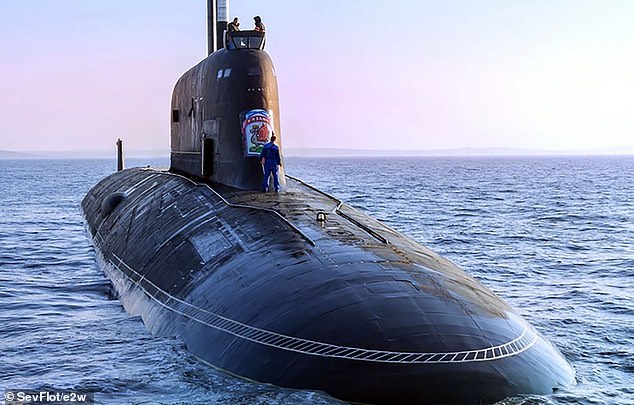
The Russian submarine Kazan Yasen-M, part of the Northern Fleet, passed close to the American coast
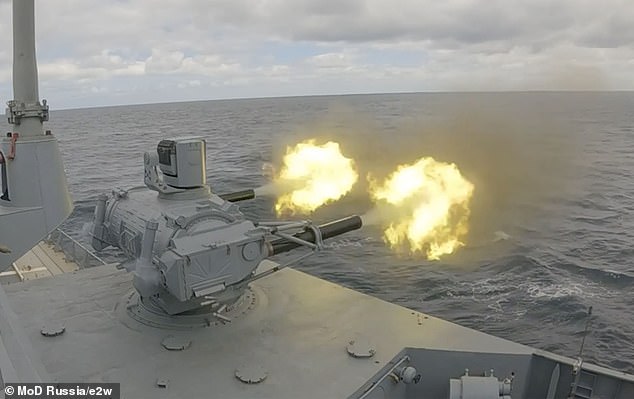
The Russian frigate Admiral Gorshkov is seen firing its weapons during a Russian naval exercise
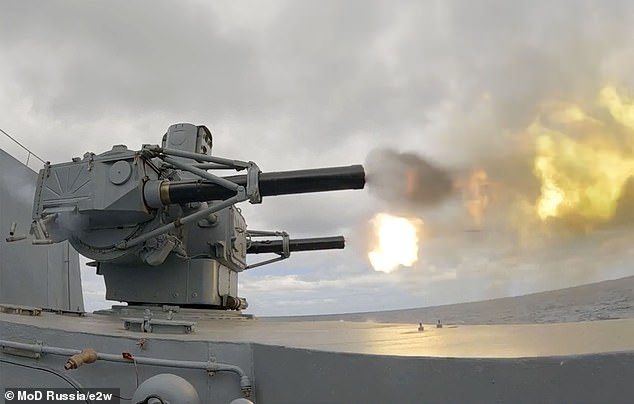
Russian frigate Admiral Gorshkov in training mode in the Atlantic Ocean in late May-early June 2024
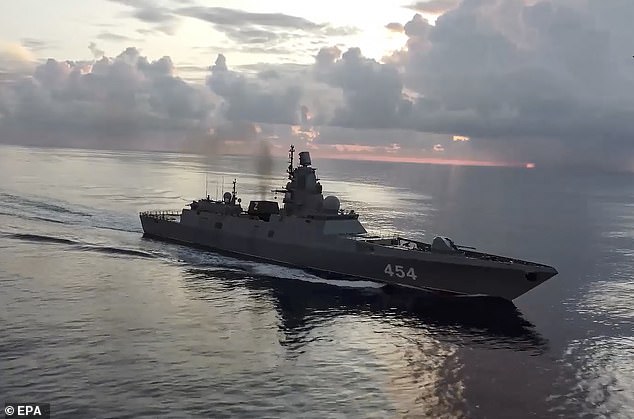
A still image from a distribution video made available by the Russian Ministry of Defense press service on June 11, 2024 shows the Russian Navy frigate ‘Admiral Gorshkov’ taking part in military exercises in the Atlantic Ocean while en route to Cuba
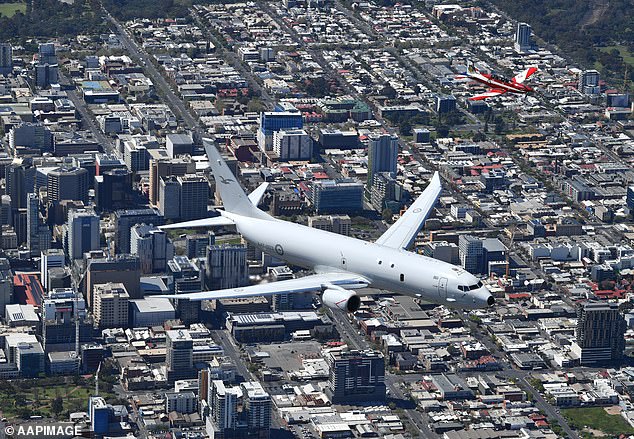
A Boeing P-8 Poseidon was sent to monitor the waters off the coast of Florida and track the Russian fleet
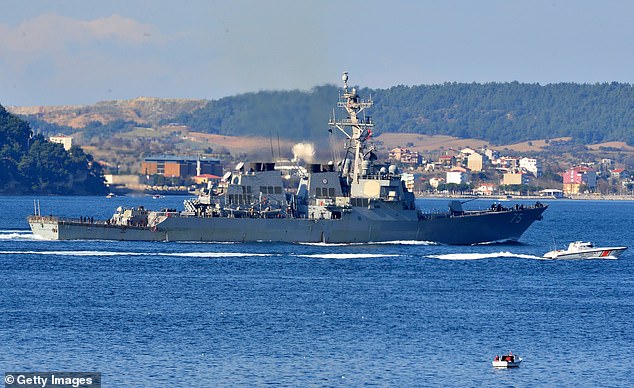
The US Navy warship ‘USS Donald Cook’ was one of three US destroyers sent to track the Russian ships
In addition to the three US destroyers, NORTHCOM also sent a Boeing P-8 Poseidon maritime patrol and reconnaissance aircraft, which OSINT analysts said last night was monitoring a sea area roughly equidistant between the US and the Bahamas – likely the location of Putin’s warships.
The Royal Canadian Navy frigate HMCS Ville de Quebec also joined the American fleet in its tracking operation to ensure that the Russian fleet would enter Cuba without any problems.
The Russian Defense Ministry did not indicate what firepower the ships carried, although Cuban officials denied the Russian ships were carrying nuclear missiles.
Russian pro-war Telegram channels boasted that nuclear submarine Kazan carries ‘guided missile weapons’.
Admiral Gorshkov, meanwhile, is carrying a battery of Putin’s fearsome Zircon hypersonic missiles, and both ships are seen as key players in Moscow’s nuclear strike force.
The other two Russian ships sailing towards Cuba are the tanker Pashin and the rescue tug Nikolay Chiker.
During the Russian war games in the Atlantic Ocean, Admiral Gorshkov “defended the ships of the Northern Fleet against air attacks and anti-ship missiles of the conditional enemy,” the Russian Ministry of Defense said:
These exercises were performed using computer simulation, as a test targets were hit with the Poliment-Redut SAM system, the A-192M ship artillery system and the Palash anti-aircraft system.
Russian press said that by sailing so close to the US coast, Putin’s ships were simply “giving the US a taste of its own medicine”, as analysts pointed out that as many as 50 NATO ships are currently conducting major exercises in the Baltic Sea as part of the BALTOPS 24 military exercises.

Vladimir Putin’s most modern frigate Admiral Gorshkov (photo), a hypersonic missile carrier, escorts nuclear submarine Kazan and two other naval vessels
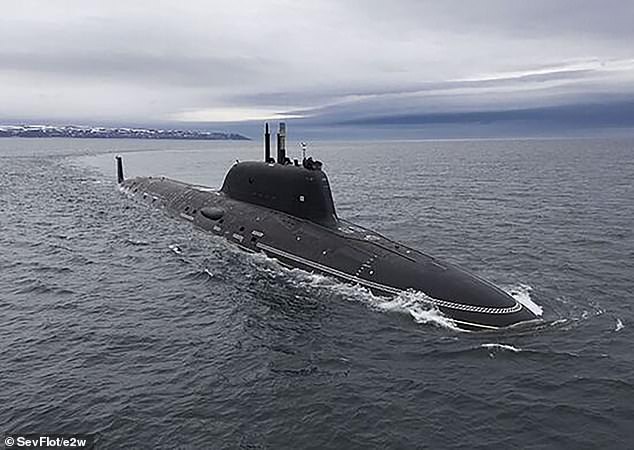
Russian warships are practicing the use of high-precision weapons in the Atlantic Ocean, the Russian Defense Ministry said on Tuesday, putting the US on alert. In the photo: the Russian submarine Kazan Yasen-M, part of the Northern Fleet
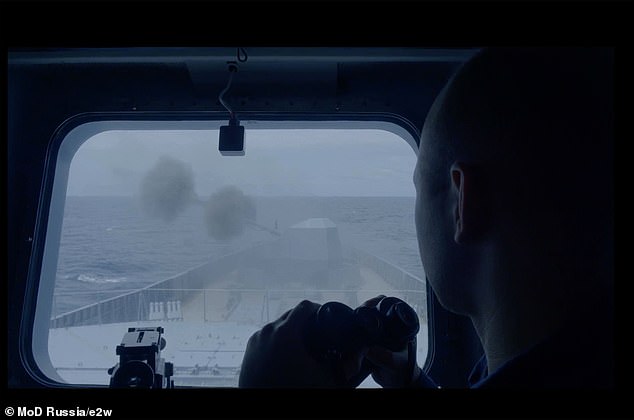
A Russian sailor looks out a window as the Russian frigate Admiral Gorshkov uses its weapons for the first time during a naval exercise, in footage released by the Russian Ministry of Defense
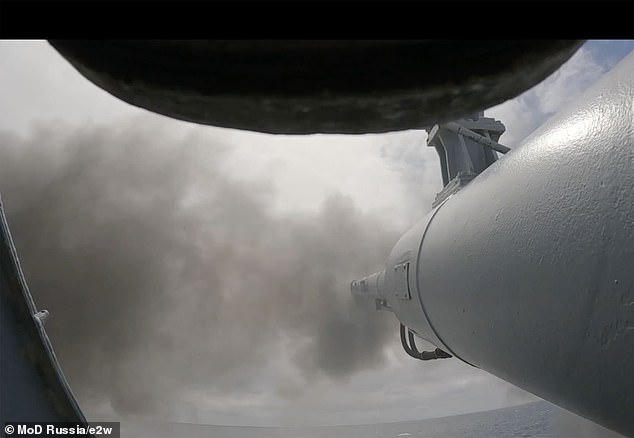
Footage shows a weapon being fired at the frigate Admiral Gorshkov during Russian naval exercises
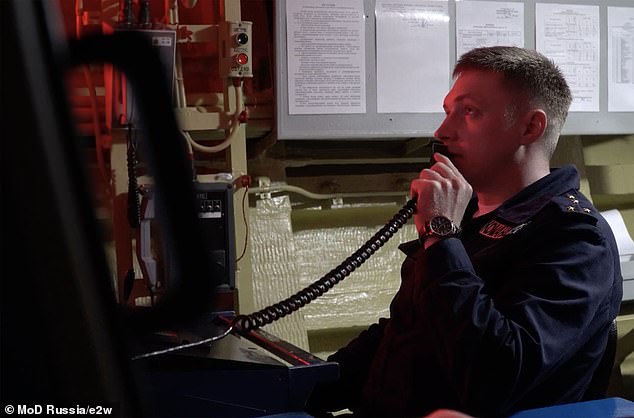
A sailor is seen riding the Admiral Gorshkov during Russian naval exercises
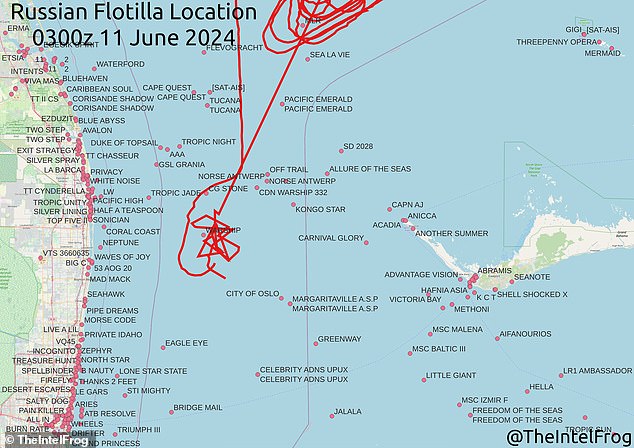
All four ships will arrive in Havana on Wednesday and will reportedly pass 25 miles off the coast of the United States on their journey. Pictured: A map released by OSINT analysts showing the suspected location of the Russian ships as they passed between the United States (to the west) and the Bahamas (to the east)
Russia and Cuba previously announced that Moscow’s ships would conduct exercises off the coast of Havana from June 12 to 17.
The two countries have shared close ties since the days of the Soviet Union, first strengthening diplomatic ties after the 1959 Cuban Revolution.
As communist states, Cuba and the USSR were seen as the antithesis of capitalist America at the time, when Washington and Moscow were engaged in the Cold War.
In 1961, the US led an unsuccessful attempt to invade Cuba and overthrow its government (known as the Bay of Pigs Invasion), further widening the rift between the US, USSR and the Cuban government.
Relations deteriorated further during the Cuban Missile Crisis – a thirteen-day standoff between the US and the Soviet Union in October 1962.
During the crisis, the US deployment of nuclear missiles in Italy and Turkey was matched by the Soviet Union’s deployment of nuclear weapons in Cuba.
The crisis is widely seen as the closest the Cold War came to escalating into outright nuclear war, and perhaps the closest the world came to total nuclear annihilation.
Since then, relations between the US and Cuba have softened.
Diplomatic ties, which were severed in 1961, were restored for the first time on July 20, 2015, and each country has an embassy in its respective capitals.
The US still maintains a commercial, economic and financial embargo on Cuba, making it illegal for US companies to do business with the country.
